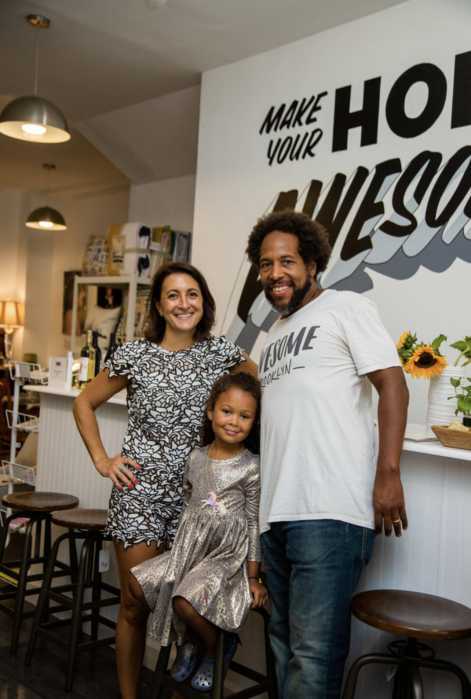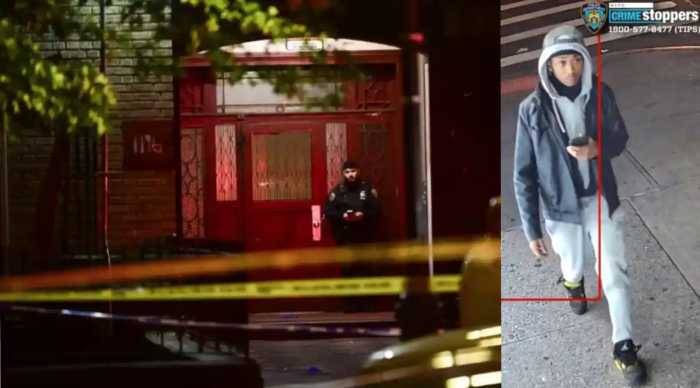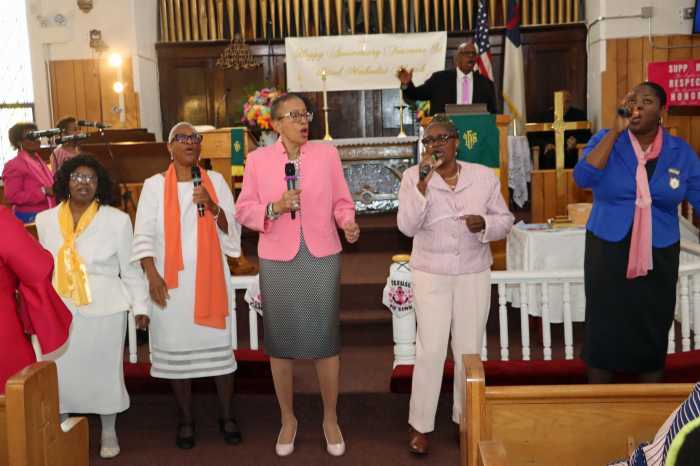The Ballroom scene in Manchester, England, is the setting for Dennis Keighron-Foster and Amy Watson’s celebratory documentary “Deep in Vogue.” The hour-long film has various Mothers and other members of different Houses telling their stories. The participants include men and women — transgender and cisgender — black and white, straight, gay, and genderqueer, and mostly working class. The Ballroom scene offers them a safe space and a place to find a sense belonging. The personalities are, course large — especially Grace Oni Smith and Joshua Hubbard from the House of Decay, who are prominently featured.
The filmmakers, who immersed themselves in the scene for a year in 2017, spoke with Gay City News about capturing their subjects living the fantasy and making their new energizing documentary.
GARY M. KRAMER: How did you come to find this scene, its participants, and determine you should make a doc about it? Have you participated in Ballroom culture?
AMY WATSON: Dennis has been going to the balls for a few years; they’ve been happening since 2008 between Liverpool and Manchester. The feeling we got from being in those spaces, it was a kind of spiritual feeling and we wanted to share that feeling with as many people as possible.
DENNIS KEIGHRON-FOSTER: Amy did an amazing strut your stuff at the Manchester International Festival. Me and my friend Esme, who is in the film, we got to walk the ball together as spectators and lovers of the ball.
WATSON: Dennis did a kind of John Galliano look at the Red Ball that the House of Decay threw.
KEIGHRON-FOSTER: Yeah, I was like a New Romantic Pirate! As a queer gay dad, the gay scene and the LGBT scene in Manchester — it’s lackluster lately. There aren’t a lot of spaces for people to be themselves or that don’t fit into that heteronormative box, so walking into ballroom for the first time and Rikki [the emcee] coming out and giving his amazing speech and people of all different shapes and sizes, you think, “Oh, this is where I am meant to belong! Bye bye, Canal Street” — which is the commercial gay street in Manchester.
WATSON: You said something beautiful to me once about being a feminine gay man and finding high heels attractive but being looked down on.
KEIGHRON-FOSTER: Absolutely! Even I, as a left wing, gay queer person, I was stunted and not willing to express myself or maybe thinking it was a bit too much. But as soon as I got into that space, I saw I was wrong, and expressing yourself is the way forward.
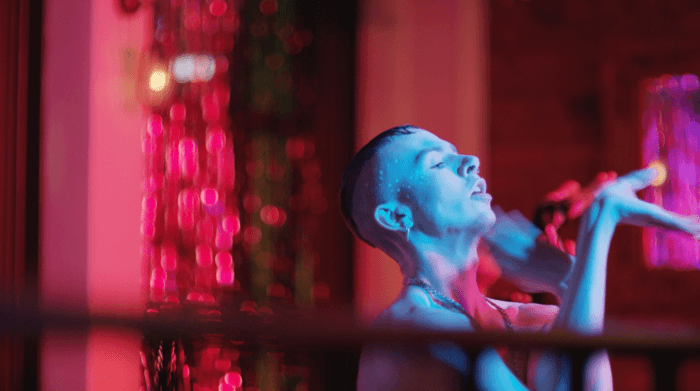
KRAMER: Can you talk about your approach to the documentary, mixing performance footage with observational footage with archival footage as well as photographs and interviews?
WATSON: I guess it comes down to neither of us had ever made anything before. We just made it up as we went along. We needed something to put over these interviews, and making a dance film we needed to showcase dance. We really wanted to show vogue in the way that ballet dances are typically shot — point out the dignity and artistry of the form in a way that you don’t always see. Because it’s in a crowded, excited buzzy room. We wanted to heighten it much as we could.
KEIGHRON-FOSTER: With the history of the Ballroom culture and the fact that this is happening in Manchester, it was really important to show the history of the ball, like Rikki does when he’s emceeing the ball in the UK. Having the archive footage showing where it came from was really important to us as filmmakers. To show that they are doing something different here in Manchester, but they are paying proper homage to the original scene in New York.
KRAMER: I like that the film isn’t a competition documentary, that it is immersive. Were you afraid to root for one House over another? Did you have favorites?
KEIGHRON-FOSTER: We started filming it thinking that the competition element would have to be involved, but we realized it’s not necessary to show who the winner is or the competitive vibe. We give viewers insight to how fierce they are. We showcase the two Manchester Houses the most. To show the winner would not have done the whole Ballroom scene any justice. It would have made it about that one moment in time.
WATSON: We didn’t want to do that fakey reality TV contest thing. People have seen that so much — you can see the producers saying, “Say something bitchy,” or setting up competitiony tropes. It’s the taking part that counts.
KEIGHRON-FOSTER: It’s being in that room strutting your stuff and everybody clapping for you. That’s the prize.
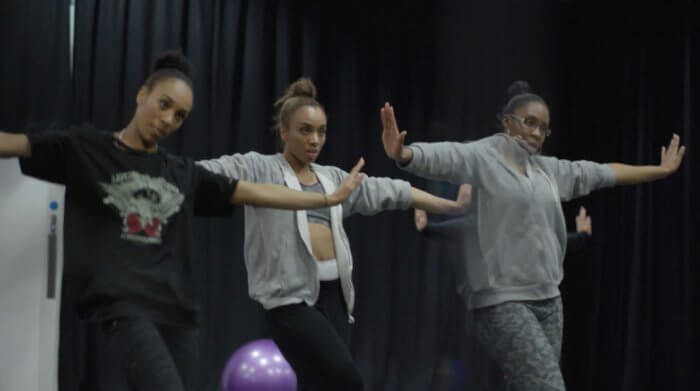
KRAMER: There are discussions about gender roles, as well as race, about being poor, and about being gay and Black, and about being invisible as a woman. What observations do you have about inclusion, exclusion, developing a sense of community, and self-expression?
WATSON: That’s what’s unique about the Manchester scene. It’s very inclusive and it has moved away from the roots of vogue culture, which it catches flack for — it’s not completely true to a 1980s New York Ball set-up. There’s choreography, there are more cisgender women involved, but everyone in the film does a pretty good job of explaining why they need vogue just as much as anyone else.
House of Ghetto is an all-female house, and the reasons behind that are really strong. The House Mother, Darren Pritchard, said, “We’ve had austerity measures and a conservative government for a long time and women of color are impacted the most.” He created House of Ghetto as an artistic statement about that to promote the dignity of that demographic and raising people up who are being stepped on by our government.
KEIGHRON-FOSTER: There really aren’t many places for women to strut their stuff without being sexually objectified by men. And there are no good spaces for women to celebrate themselves and be celebrated in the same way.
KRAMER: I appreciate the Manchester scene is more theatrical. What do you think is key to this culture that appropriates, imitates, and reclaims?|
KEIGHRON-FOSTE: I think each individual House has its own aesthetic and reasons for getting into it. Decay has a very melted, imperfect look that takes a lot of time and effort. Ghetto — they go for a cleaner, sassier look. It’s about their backgrounds. Grace and Joshua are doing extreme performance art in queer clubs. The girls of Ghetto are from an area of Manchester that could be called a ghetto. In Liverpool, there is more dance training and leadership from Darren Suarez. They bring own individuality and that what makes it so explosive.
WATSON: To zoom out a bit, Manchester — and how many years of conservative government have we had — it’s not culturally, politically, or historically New York in the 1980s. We made the film to ask, “Why is this Black and Hispanic-origin 1980s New York thing happening in Manchester in the 20-aughts? There are similarities — push from the right wing, Brexit, the rise of homophobia and racist attacks. There is a lot in common with 1980s New York.
KEIGHRON-FOSTER: Equality for women, for people of color and members of the LGBT community. In the 1970s in Manchester there were signs that read “No gays, no blacks, no Irish, and no dogs.” Maybe we need to start an Irish house?

KRAMER: Doing Ballroom, your participants show off and express themselves, feel acceptance that they may not get otherwise, and have a sense of confidence. What can you say about the aspirational qualities of the scene?
KEIGHRON-FOSTER: What I loved it that everyone who comes on stage, you want to be the person on stage. I want to dance like that and to win that category and to wear that outfit. It rubs off. I’ve become more flamboyant since making this film. I wear makeup now. I’ll go out in more outrageous clothes. Vogue and Ballroom culture helps you self-actualize.
WATSON: I remember talking to Rennae in House of Ghetto. She’d been to dance school and they didn’t even make tights that a person of color could wear. There was a feeling of exclusion from the mainstream. All of that anger about that situation gets transformed into something positive in the vogue ball. I don’t need to conform to this way of being. I’m going to create my own channel my own way of being because the mainstream can be so disappointing.
DEEP IN VOGUE | Directed by Dennis Keighron-Foster and Amy Watson | FilmRise | Available Dec. 8 on iTunes, Amazon Prime Video, GooglePlay, Microsoft, DirecTV, InDemand, and VUDU
To sign up for the Gay City News email newsletter, visit gaycitynews.com/newsletter.







